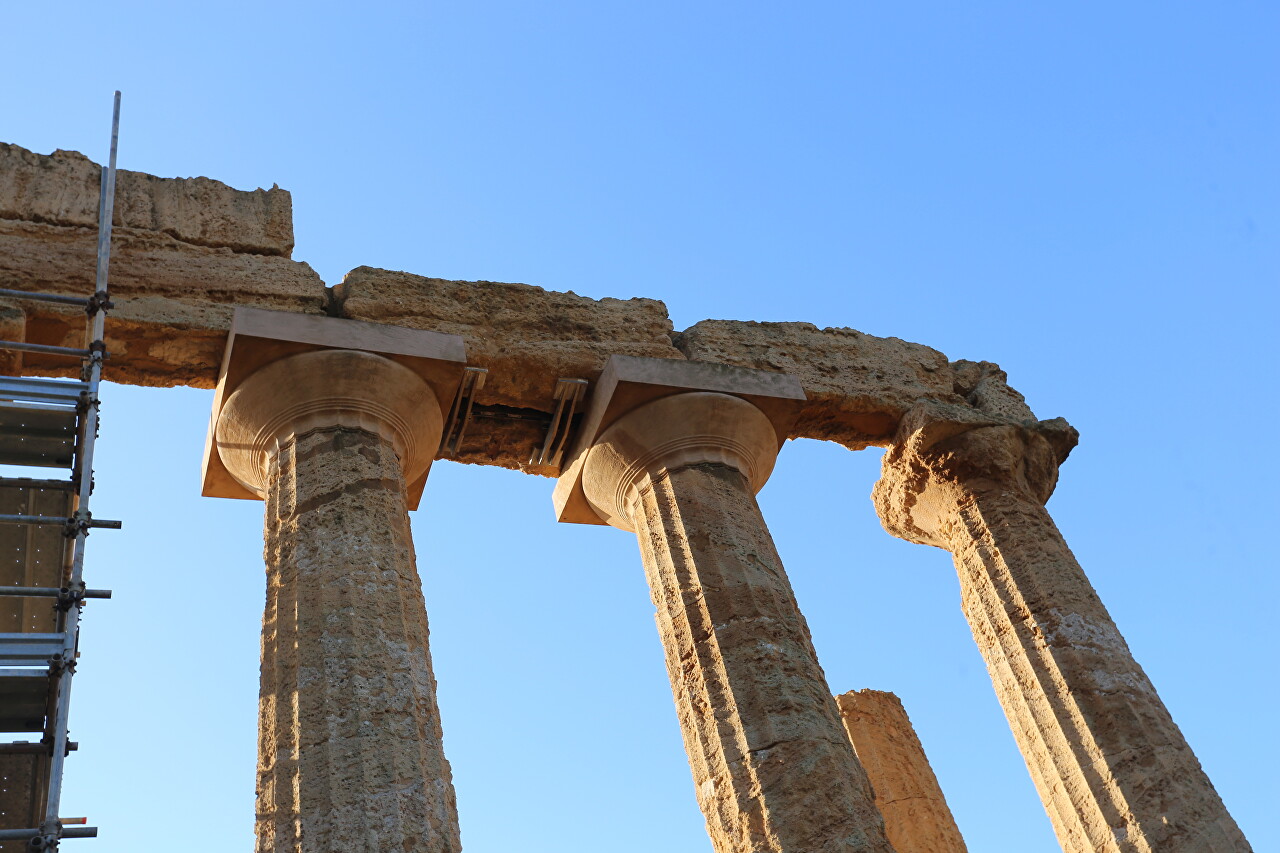Tempio di Giunone, Agrigento
Near the eastern entrance to the archaeological park Valle dei Templi are the ruins of an ancient Greek temple, built outside the southern outskirts of the city of Akragas (ακραγας) at the top of the so-called Hill of Temples (Collina dei Templi). In guidebooks and on maps, the temple bears the name of the Roman goddess Juno (Tempio di Giunone), the patroness of the family (the Greeks had it as Hera).
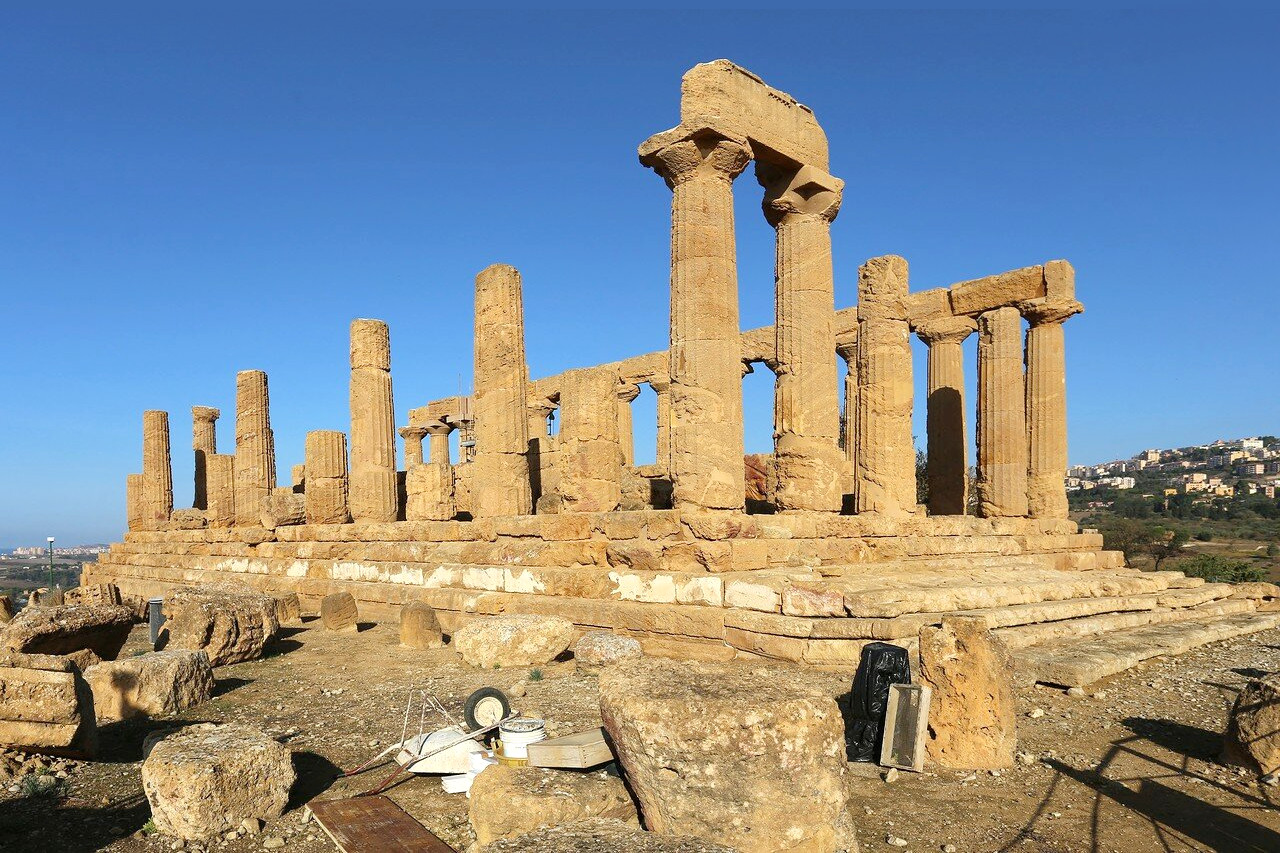
The name comes from a misinterpretation of a text by the Roman writer Pliny the Elder, where he actually refers to the temple of Hera at Cape Lacino in Calabria. It is not known to which deity this structure was dedicated, so in archaeological circles it is simply called "Temple D".
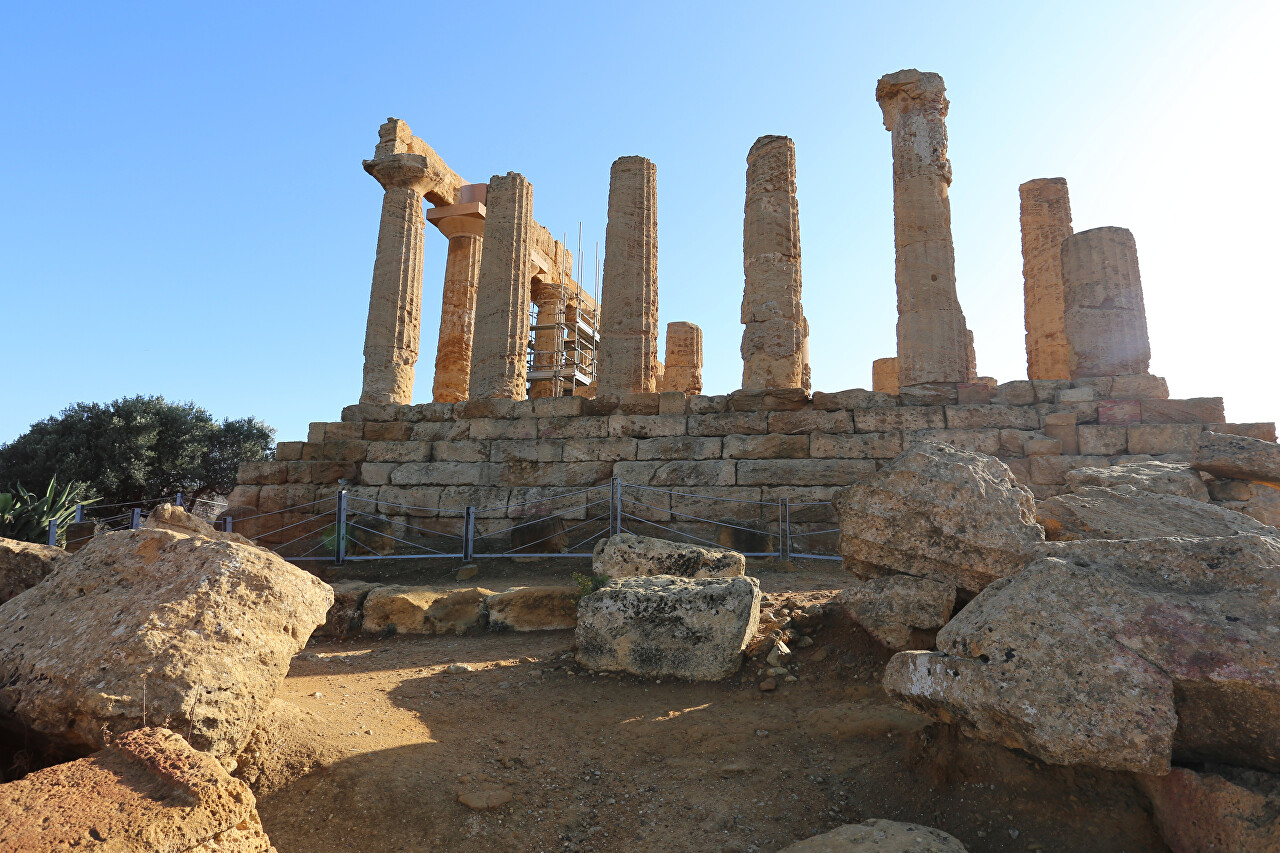
The style of the temple belongs to the archaic Doric period, so its construction dates back to 450 BC. In 406 BC, Aragas was besieged and captured by the Carthaginians, who sacked the city. The same fate befell the temple, archaeologists found in it stones with a red tint, which indicates the impact of a strong fire. In the Roman era, the temple was restored.
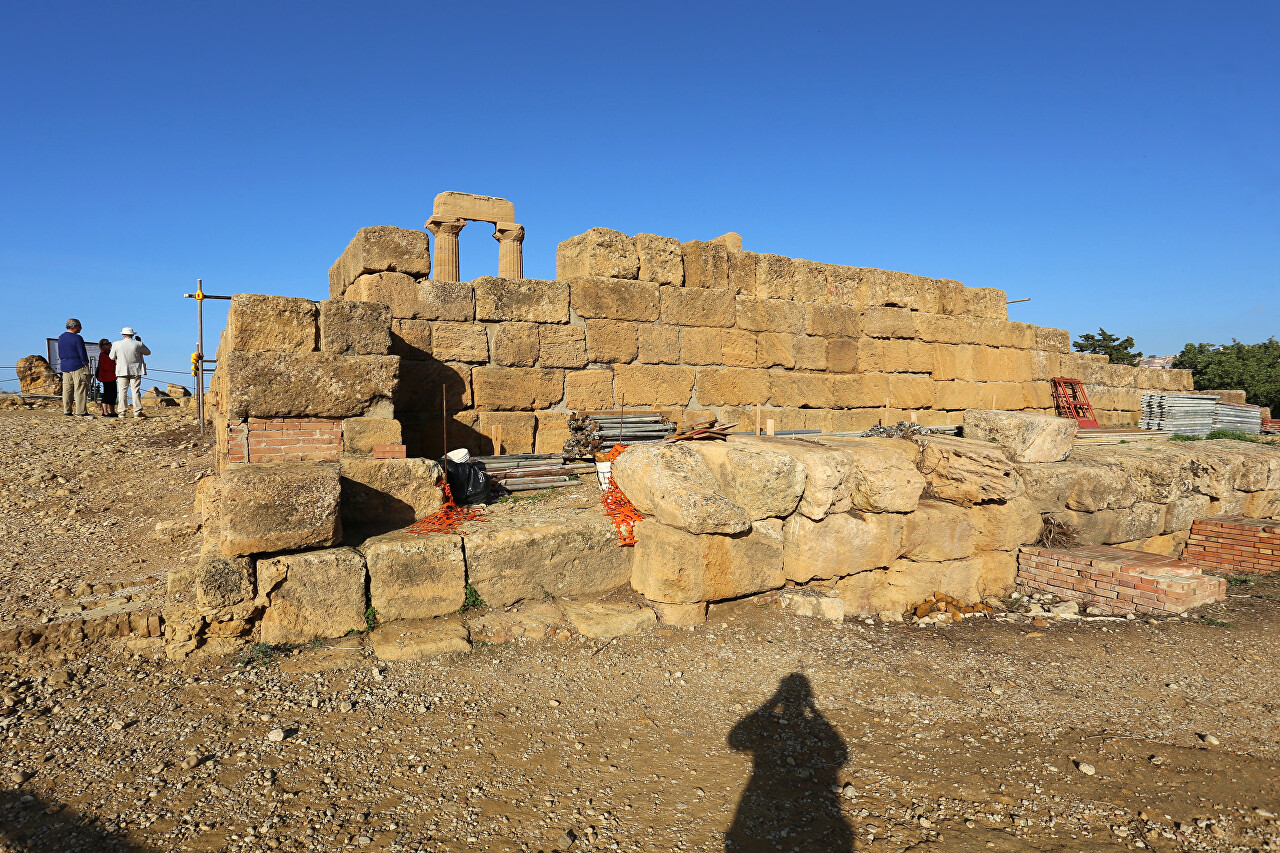
The base of the building (crepidome) has a rectangular shape measuring 38 by 16.9 meters, it is laid out of four tiers of rectangular stones that form steps. 34 columns are installed on it, 6 columns on short sides and 13 on long ones. The columns are 6.4 meters high and consist of four parts.
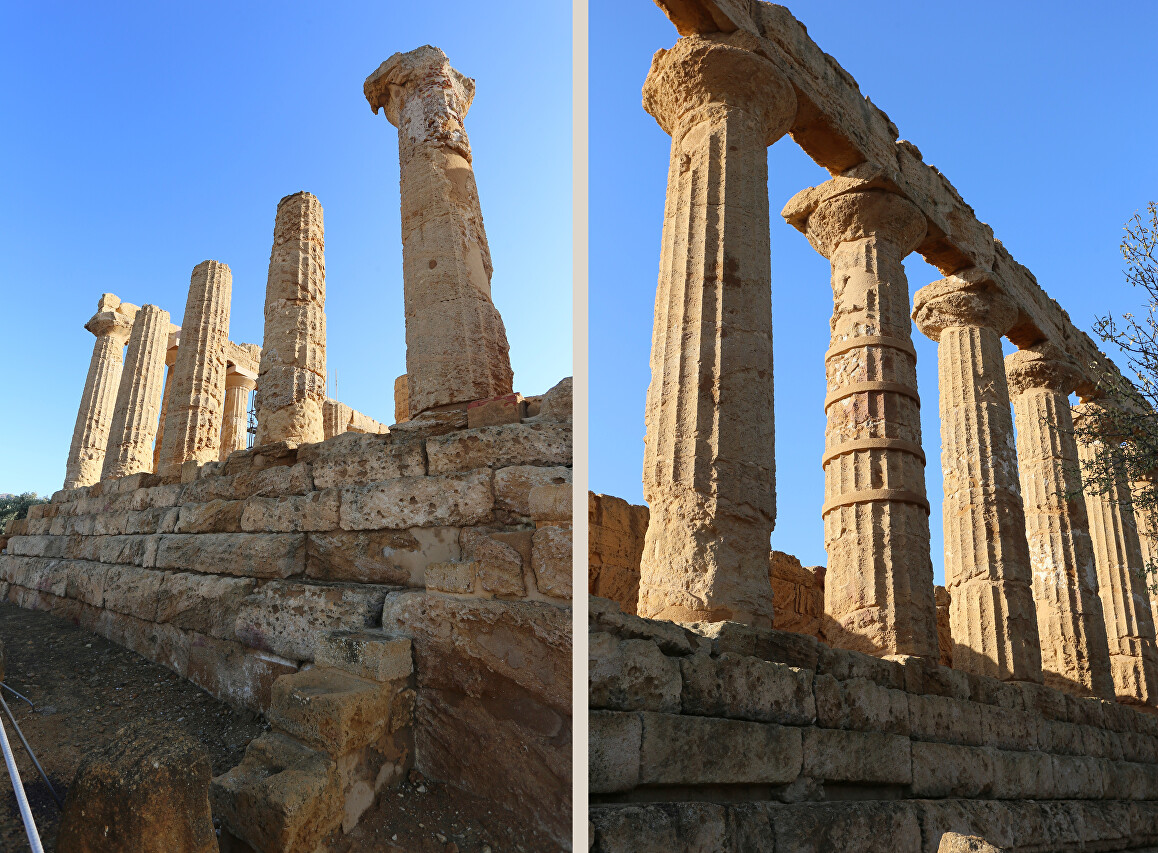
The columns have a conical shape, six front columns have a barrel shape with a narrowing up, the rest are conical. From above, the columns are connected by stone blocks.
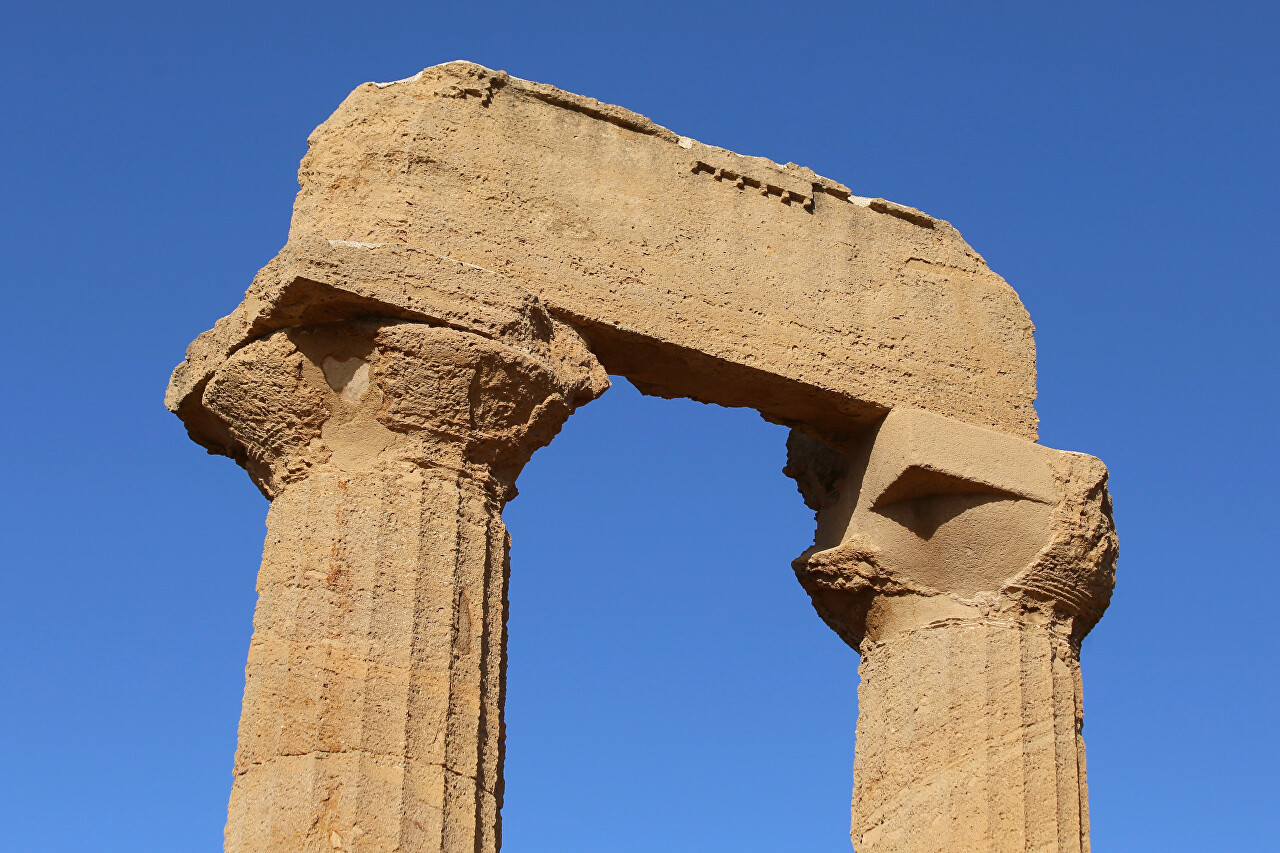
The interior space is divided into three parts (Peripter style): the front verandah (Pronasos), the main room (Cella) and the rear verandah (Opistodome). The outer borders of the verandahs are formed by two columns. On the eastern side are visible the remains of an altar, where 10 steps led up.
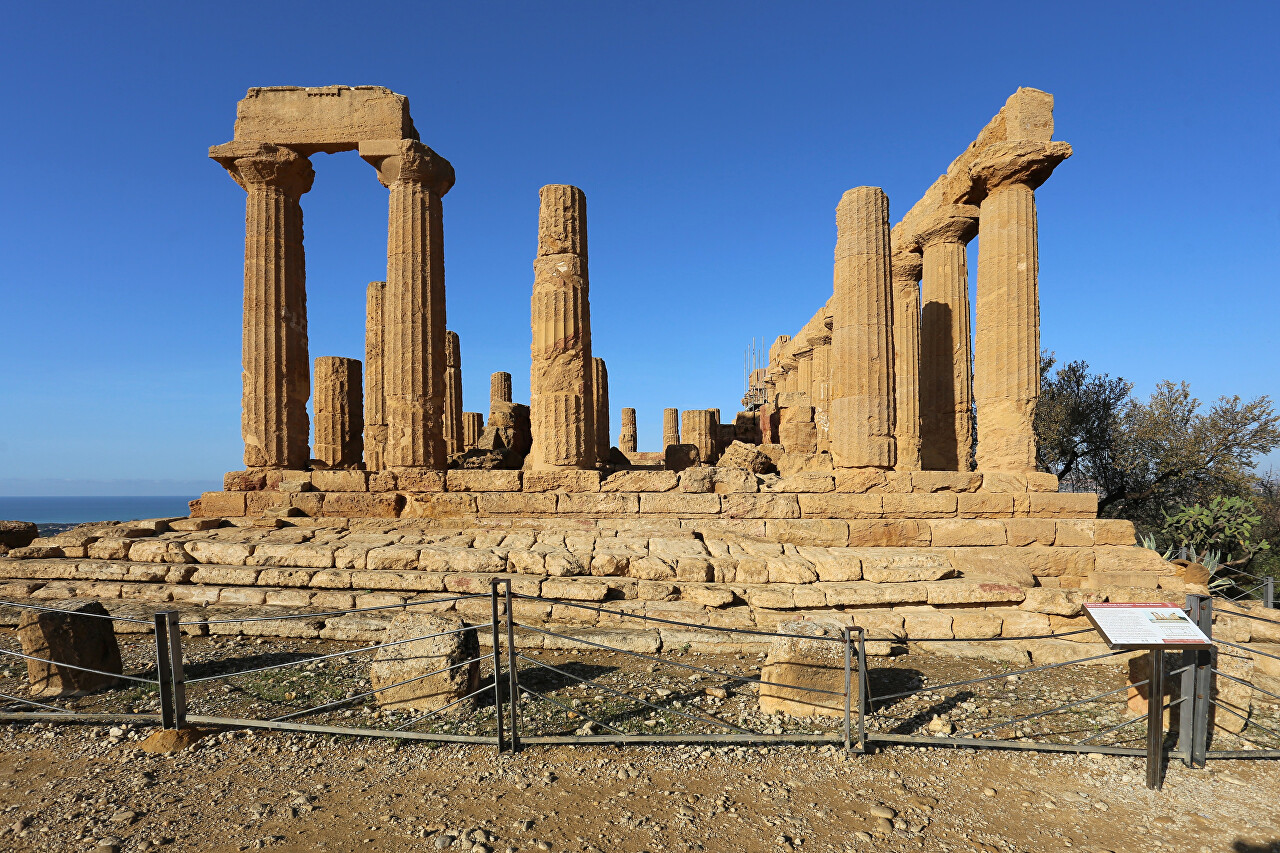
The first works on the restoration of the temple began in the 18th century, the columns on the north side were restored. The ruins were restored to their current state in 2000-2006 with EU funding.
